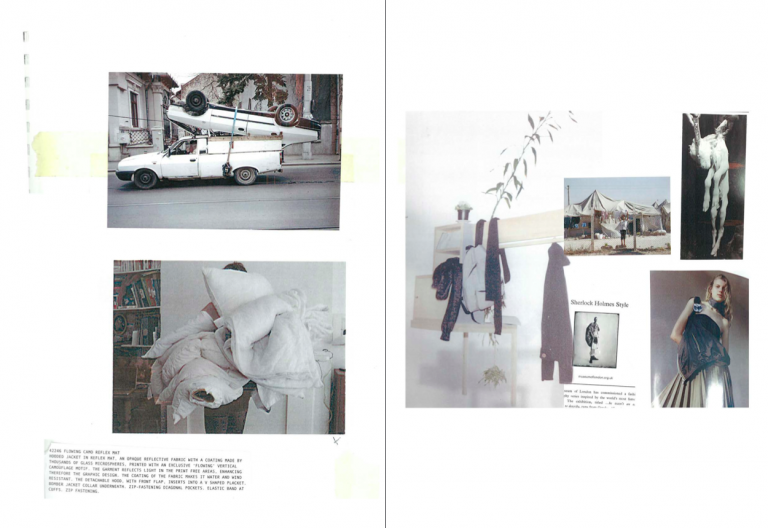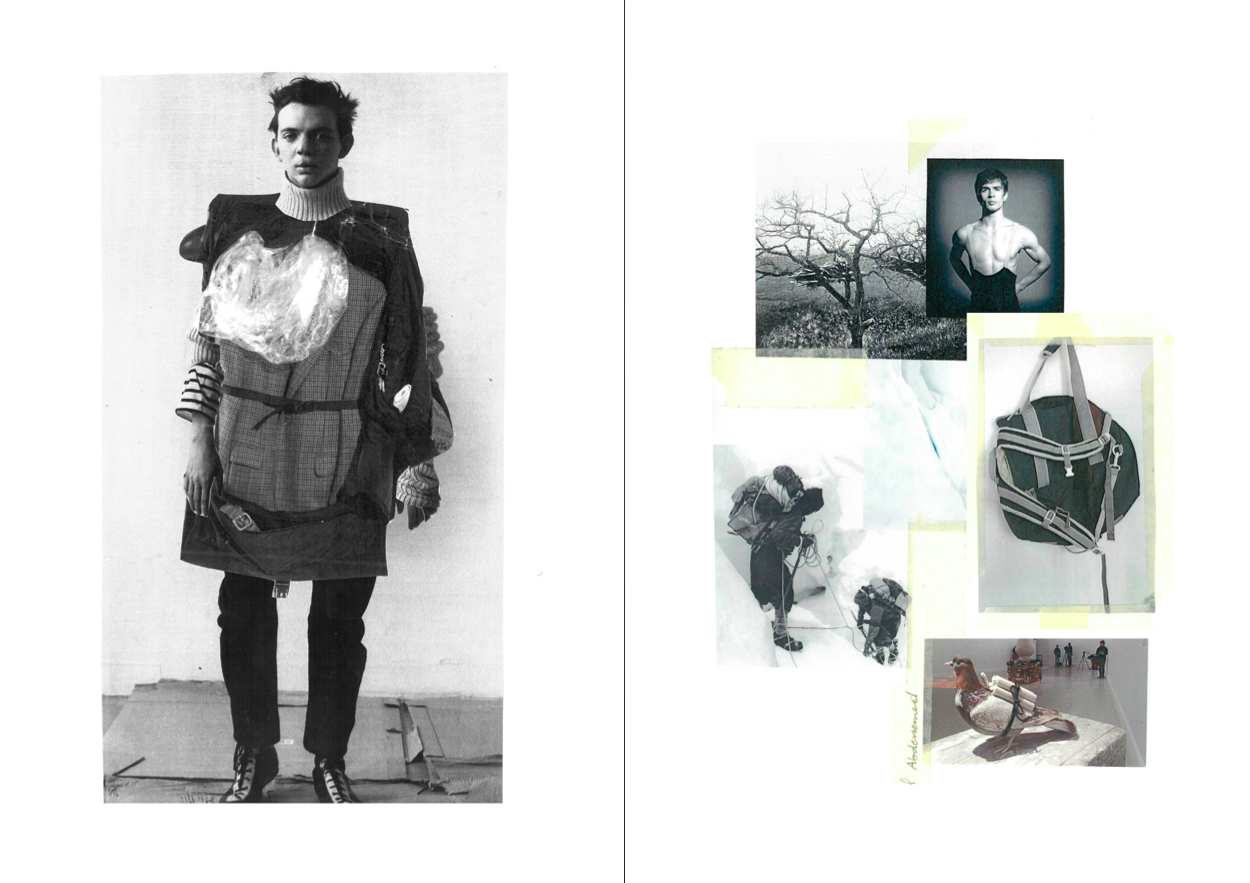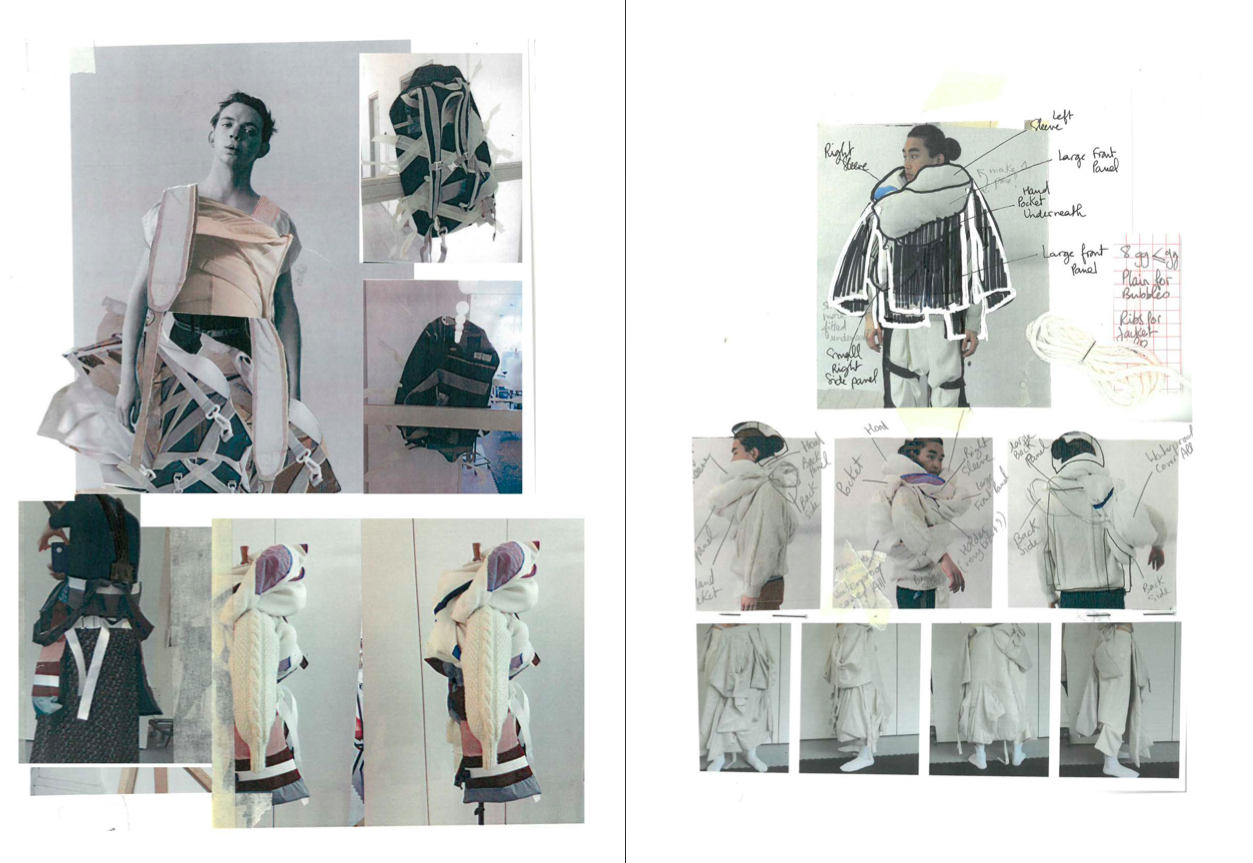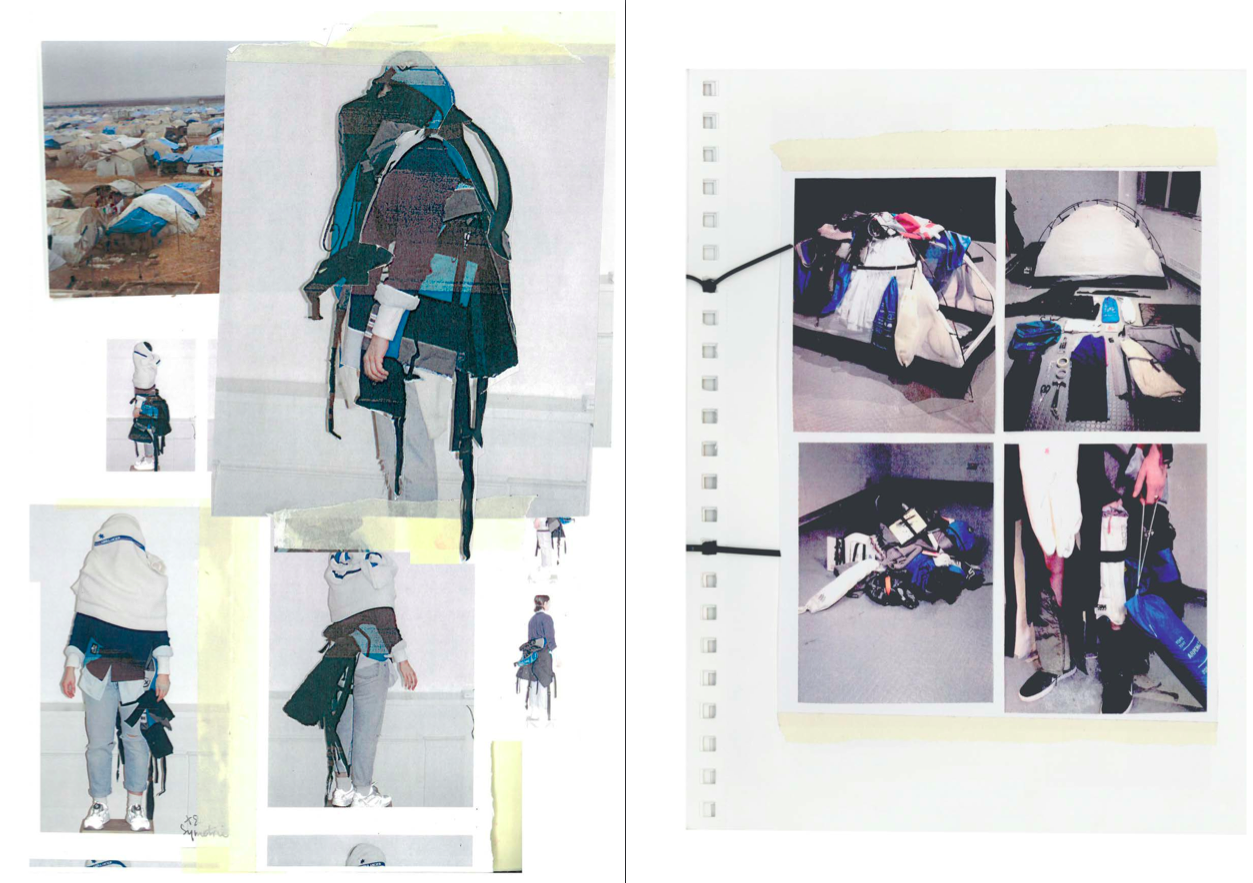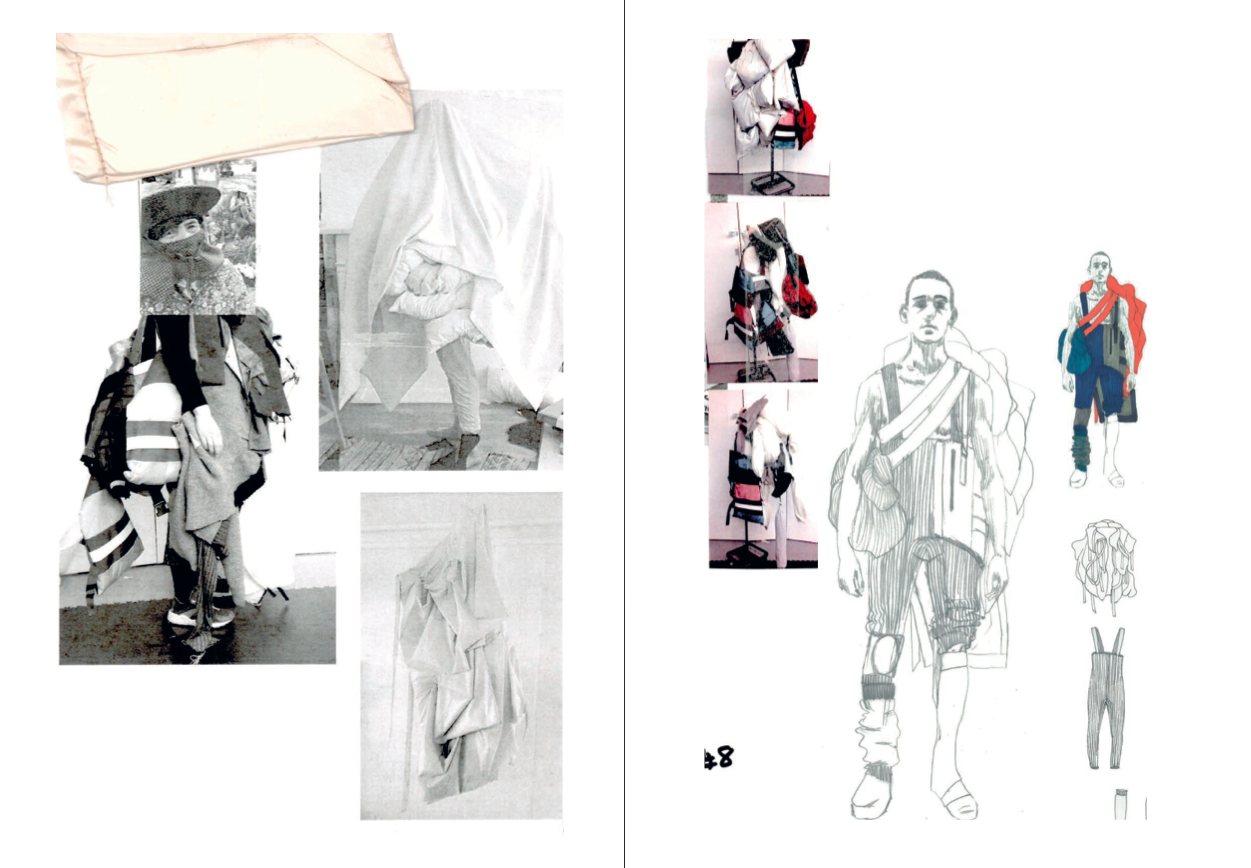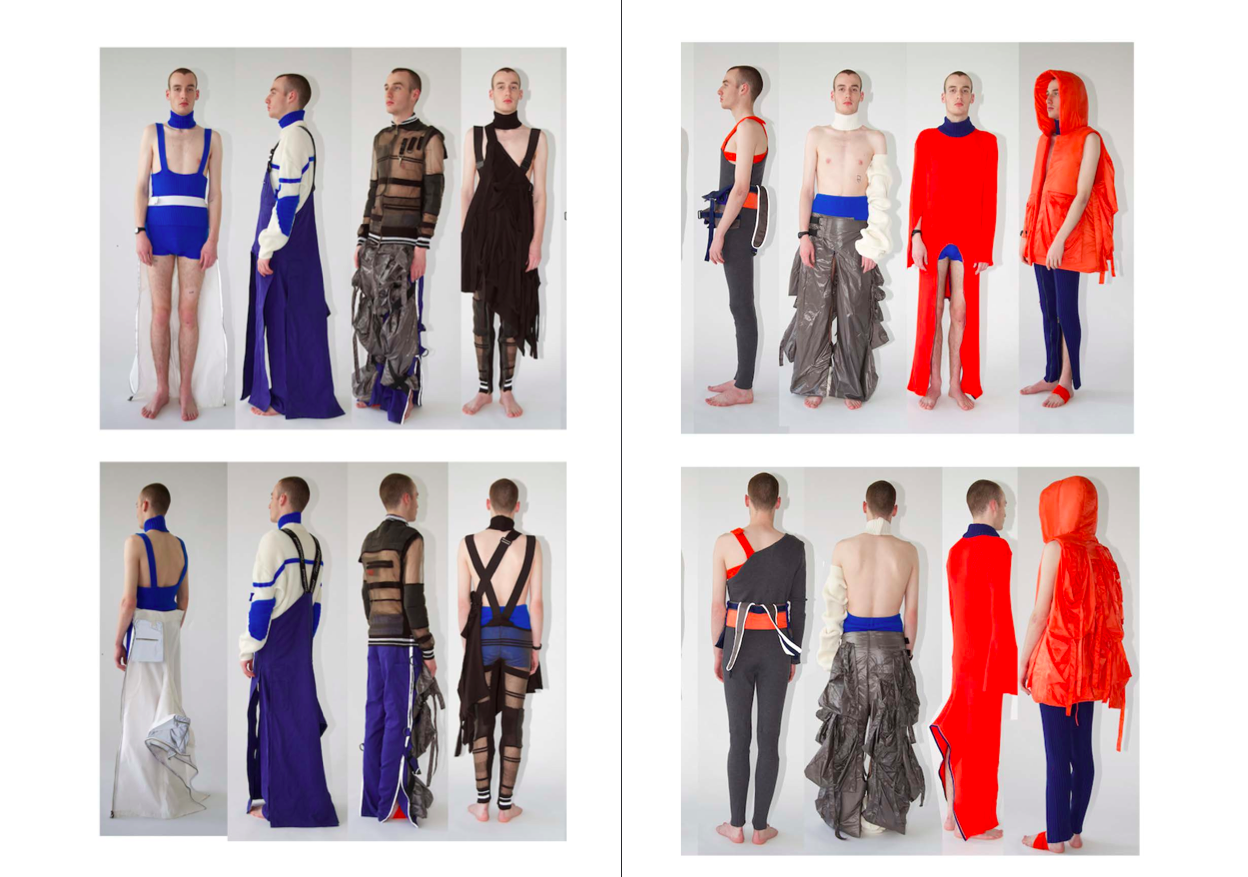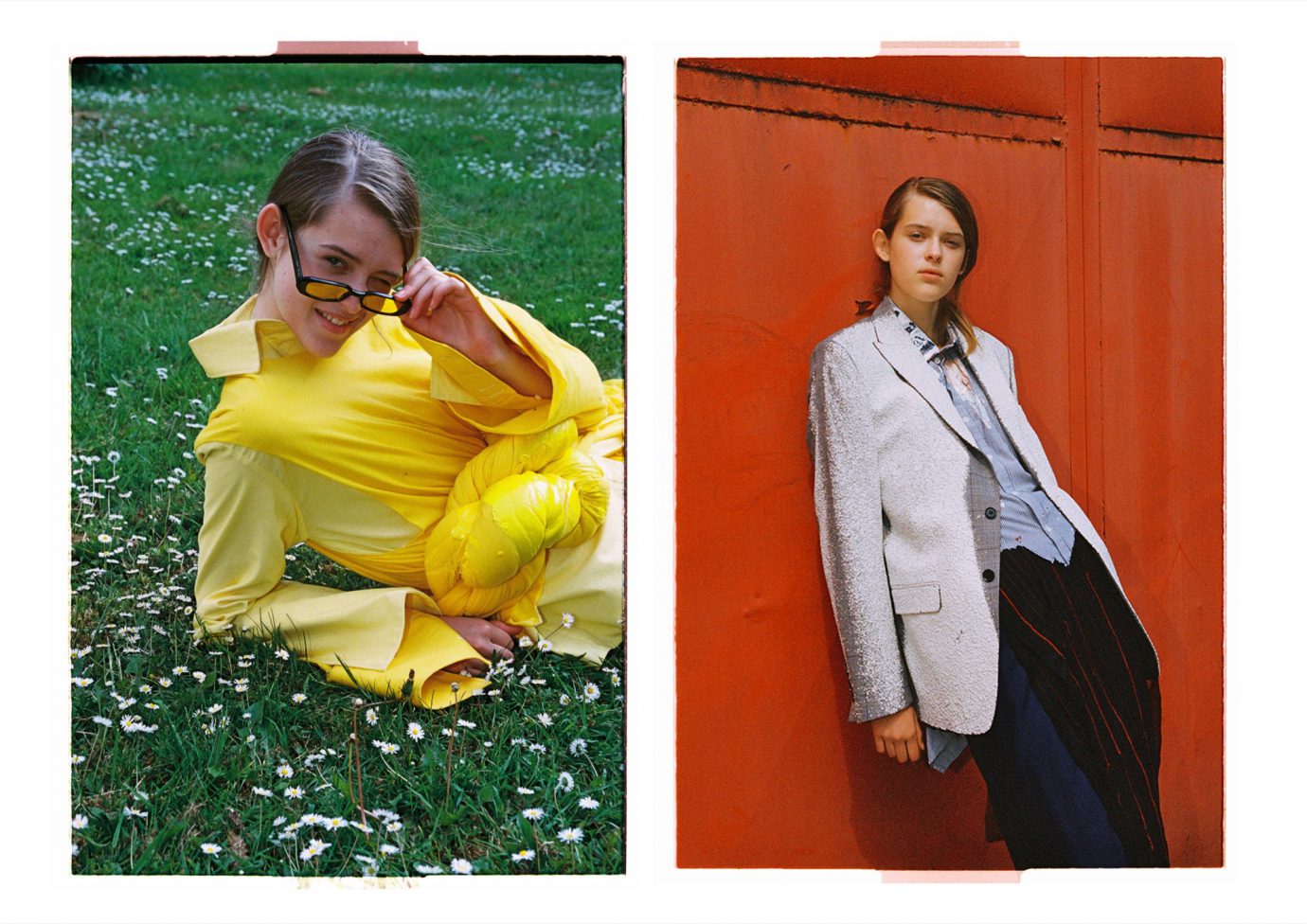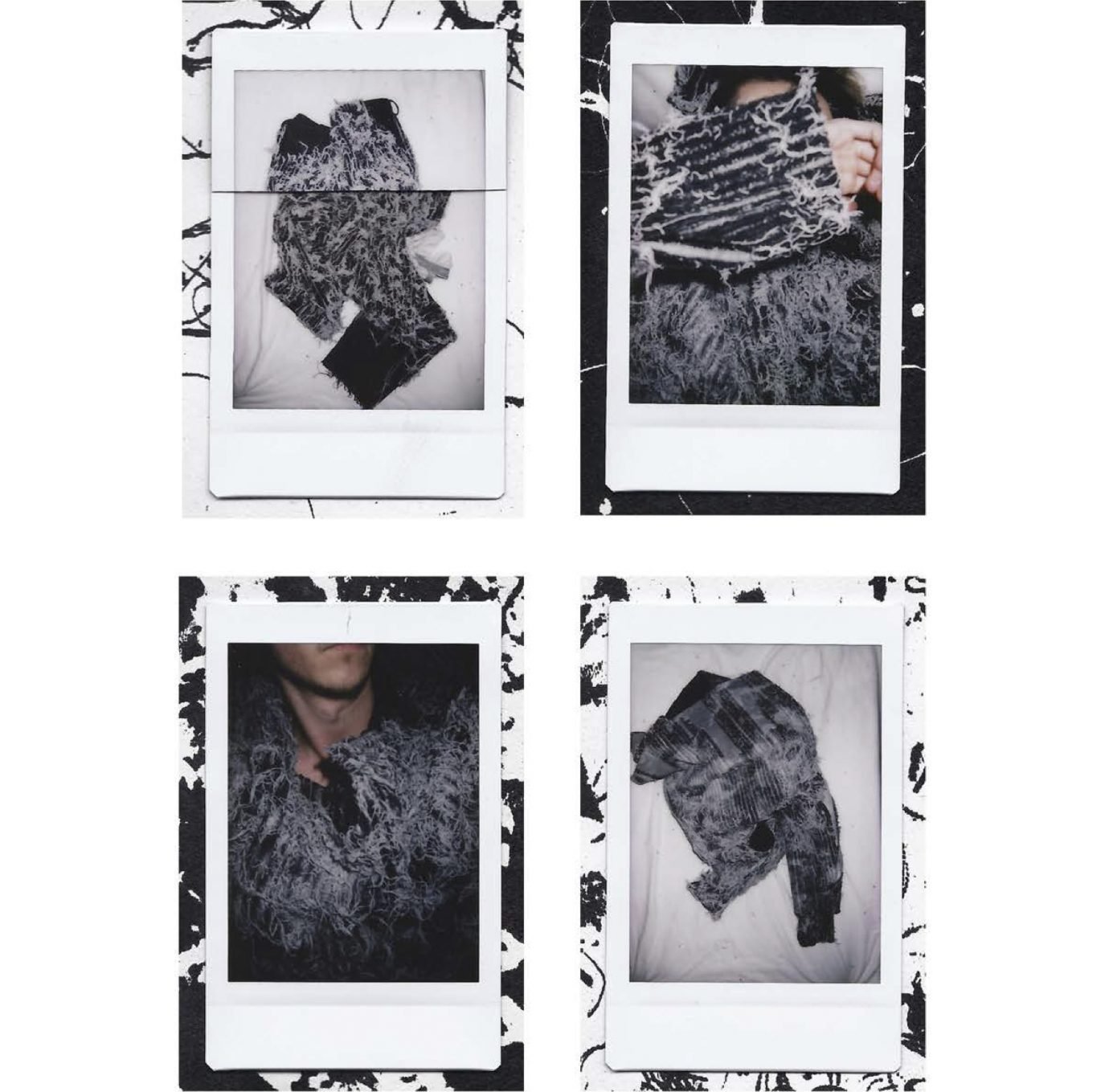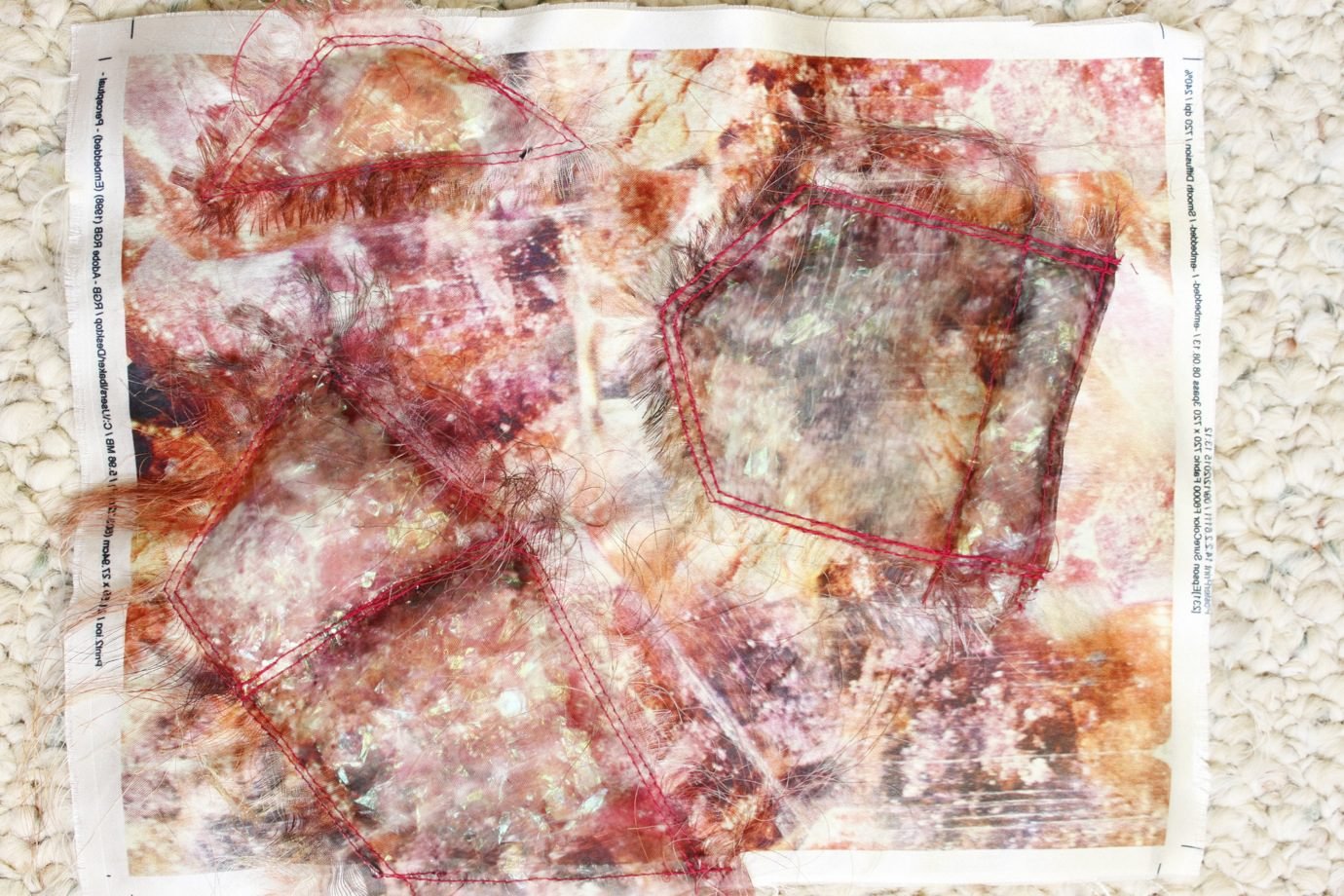The 360° video that Marie produced in collaboration with Emma Rose Hamilton, exemplifies the conceptual underpinning behind her collection, which subverts our usual understanding of functional design. Here, she achieves in crafting garments that comment upon the current state of society where events unfold before us, such as the migrant crisis, which we potentially only access through our ‘screens’: a further boundary of reality which encourages isolation. Marie’s work is a social, political and spatial response to all which surrounds her: a current and increasingly relevant entity which demonstrates the far-reaching nature of conceptual design.
We speak with Marie to find out more about her approach and experiences of her time at the Royal College of Art.
“WHEN THINKING ABOUT THE ONGOING EXTREME VIOLENCE OUR SOCIETIES FACE, SUCH AS THE ATTACKS IN PARIS AND BRUSSELS, I WANTED TO CREATE A SENSE OF PERSONAL SECURITY TO THE GARMENTS. I EMPLOYED CLOSE-FITTING KNITWEAR AS A METAPHOR WHICH SYMBOLISES A SELF-INDULGENT ARMOUR: A PROTECTION OF PERSONAL SPACE WITHIN A BREATHABLE ENVELOPE.”
Can you tell us about what motivated your final collection and what it reflects?
My collection embodies my experience at The Royal College of Art and all which I have learnt about myself as a designer. Naturally, my work relates to my background and issues that I’m passionate about. All of my previous projects have spoken about quiet minorities: exploring issues regarding tolerance, disability and mental illness, religion and beliefs.
The journey for my collection began by investigating the interaction between the body and garments upon it: how this movement creates an individual language. When drawing upon social and political issues, I thought about the space which surrounds the body, and I started to look into traveller expeditions and migrants: their needs, camps and how they carry personal belongings and thoughts. I wondered what a modern, nomadic world-citizen would have as a personal reference to their past and what they might need for the journey ahead.
Ezio Manzini’s talk ‘People on the Move’ spoke about how design can respond to fluxes in migration. He reflected on African migrants who had been taught artisanal skills to counter-balance the rural depopulation of a small village in Italy and upon listening, I felt a strong faith in humanity. These ideas strongly adhered to the values of the fluid society – a society without any boundaries.
How did you realise these concepts?
I translated these ideas by crafting multipurpose, multiposition pieces which resemble bags. A new nomadist’s wardrobe which has an ability to respond to a variety of journeys and situations. When thinking about the ongoing extreme violence our societies face, such as the attacks in Paris and Brussels, I wanted to create a sense of personal security to the garments. I employed close-fitting knitwear as a metaphor which symbolises a self-indulgent armour: a protection of personal space within a breathable envelope.
My concepts exist within an ever-evolving context and I felt truly betrayed by the referendum result, because a Brexit world is the exact thing my project fights against: closed boundaries, isolated individuals scared by their differences and reduced mobility.

